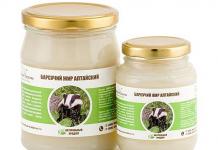You always want to diversify warm knitted clothes with something unusual. You can add a touch of spring-summer mood by decorating your clothes with flowers. They, of course, will not smell like a real flower, but they will not yield to a living plant in beauty. How to crochet roses? You will learn about this from our material.
The basics of knitting for beginners
The first thing you need to crochet a rose is a diagram and description. And here small problems may arise for novice craftswomen. The diagram is, of course, good, but you still need to be able to read it. In fact, there is nothing complicated about this, because almost all images have footnotes indicating what this or that symbol means. These are the most commonly used abbreviations:
- VP - air loop;
- CCH - double crochet;
- RLS - single crochet;
- SP - a slip stitch or a closing loop;
- PBN - half double knitting or half-crochet without crochet.
Thus, it is enough just to know how certain loops are knitted, and everything else is a matter of technique and skill. You can learn more about how to crochet a rose for beginners from the master classes below.
Openwork queen of flowers
Creating openwork jewelry is a real magic. The amazing thing about this process is that you won't be able to appreciate the beauty of the flower until you've finished knitting. However, do not worry: you will succeed, but how to crochet a rose, this lesson will tell you with a step-by-step description and a photo.

Necessary materials:
- hook 5 mm;
- pink worsted yarn;
- green worsted yarn;
- a needle with a large eye;
- scissors.
Process description:

We knit together: a rose for decorating shawls, hats and stoles
If you have been crocheting for several years already, then surely there are many knitted things in your wardrobe. Undoubtedly, there will be those who, in your opinion, are missing something. Try decorating them with flowers. For example, a crocheted voluminous rose has a fairly simple work pattern.

Knitting will allow you to create things incredible in their beauty! You can create for yourself ever-blooming and unfading flowers that will adorn your home or clothes for a very long time. And our step-by-step master class for beginners will tell you about all the intricacies of crocheting beautiful roses.
We disassemble the patterns of knitting roses using a crochet hook
To create such a masterpiece with your own hands, it is desirable that you have detailed diagrams before your eyes. The photo below shows all the patterns and descriptions necessary for knitting.

This scheme will slightly simplify the work for people who already know how to knit and will not cause any special difficulties in execution, but beginners will have to work hard. However, our master class with a job description, which you will find below, can always come to their aid.
Video tutorial:
Simple master class for beginners
To make your products beautiful and natural, get down to work carefully, without being distracted by anything. This work is delicate and painstaking. If you make every effort to create such a thing, the result will be worthwhile and of high quality.
You will need a crochet hook and threads of any color - it's just a matter of your taste.
- To get started, knit a chain of twenty-six loops, in the first row there should be single crochets.
- After that, knit two air loops in order to get volume.
- When you start to weave the third row, knit five double crochets in the loop of the previous row, and do the same with the next loop. And with the subsequent ones too - knit the whole row like this.
- After completing this work, twist the knitted into a spiral with a needle, and form a rose at the same time.
- The rosebud is ready. Now you can start making leaves for her.
To do this, knit a chain of eight loops, we knit the second row like this: two single crochets, three single crochets and two single crochets. Finish with a picot knit. An example of such a performance of the described work, see the video.
Fillet equipment for beginners with a job description
Fillet knitting is a very simple technique. It consists in the fact that you need to fill in the squares located on a special grid, while creating a drawing on it. And in order to fill in these squares, you need to be able to knit air loops and columns of two types - with a crochet and without a crochet. The schemes are shown in the photo below.


Volumetric technique for making a beautiful and lush flower
A voluminous handmade rose is not only a stunning decoration for the interior, but also a wonderful gift that will hardly leave anyone indifferent. After all, it is made by hand, with diligence and love. For successful work, use the diagram below.

Thus, having studied this step-by-step master class for beginners, you can knit beautiful and bright roses. Good luck and inspiration.
Hello!
Today I have prepared for you a master class on How to crochet a rose.
For the rose, I chose pink and purple Adelia “Valeri” yarn (50% wool, 50% acrylic, 50g / 146m) - I once knitted from it. We also need green cotton threads for the leaves and the stem, hooks No. 1.5 and 2.5, wire (thin and thicker), scotch tape and scissors.

First, we knit the petals of our rose according to scheme 1:
Crochet No. 2.5 we collect 4 VPs, close them into a ring and knit 3 VPs of the rise and 12 double crochet stitches. At the end of the row, the connecting column and again 3 VP of lifting ...


We take dark yarn and knit 4 arches of 4 VP, attaching them with single crochet to every second column of the previous row.


We knit 7-8 of these petals. I did not tie one of them with purple yarn (this will be the middle of the rose).

With a hook number 1.5, I scored 8 VP (in the diagram - 10), closed it in a ring and knitted, starting each row with 3 VP of the rise:
1 row - 3 VP of the rise and 9 columns with a crochet (st.s / n),

2 row - repeat * 2 tbsp / n, 1 tbsp / n *
3 row - repeat * 2 tbsp / n, 1 tbsp / n, 2 tbsp / n *
4th row - repeat * 2 tbsp s / n, 3 tbsp s / n, 2 tbsp s / n *.
The result is such a "cup":

1 row - 3 VP and 6 st.s / n, we turn the work,
2nd row - 3 VP, 4 st.s / n, 2 st.s / n with a common top, we turn the work,
3 row - 3 VP, 4 tbsp / n, we turn the work,
4th row - 3 VP, 2 st.s / n, 2 st.s / n with a common top, we turn the work,
5 row - 3 VP, 2 tbsp / n, turn the work,
6 row - 3 VP and 2 st.s / n with a common top.

The diagram suggests knitting each such leaf separately, each time cutting the thread. Because I do not like to bother once again with tying knots and tucking the "tails", I propose to knit without breaking the thread. To do this, having finished knitting a leaf, we "go down" with half-columns along its left edge, reach the cup and begin to knit the next leaf.

Thus, we get an asterisk - a sepal of a knitted rose.

Now we knit the leaves according to scheme 3:
We start with 10 VPs. Leave a tail of thread about 10 cm long.
Then 1 row - 1 VP rise, 2 st.b / n, 2 half-st. s / n, 2 tbsp / n, 2 half s / n, 2 tbsp / n, 3 VP and repeat the same on the other side of the leaf.

At the top of the leaf, tie half a piece. s / n, st.b / n, st.b / n into an arch of 3 VPs of the previous row, 3 VP, another 1 st.b / nakida in the same arch and then the other side of the leaf symmetrically to the first.

And now we pull out the tail of the thread, which we left at the beginning, to the front side at the top of the leaf,

and knit such a chain along the middle line:

Sew the sepal to the knitted rose:

Prepare a wire hook, tie a green thread to it and insert it into the middle of the rose.
Then we wrap the stem, as shown in the photo:

It turns out like this:

At the junction of the branches with the stem, I first wrapped it with tape, and then wound the threads. She also neatly secured the ponytails at the bottom with tape.
Now you know how to crochet a rose.
How to crochet a convex and concave column
Crocheted cup holder
Who doesn't love roses? Everyone loves roses! There are, of course, people who do not like their smell, there are those who do not jump with delight, having received a bouquet of these flowers as a gift, but will laugh with joy, holding chamomile in their hands, but by bringing the addictions of the bulk to a common denominator, you can claim that flowers with spines and velvet petals are loved by everyone. Consider how to crochet roses? We will master several ways, you can be fully armed: now you can easily decorate a simple blouse, turning it into a unique and stylish blouse, decorate a baby hat without any problems, and you can refresh home tablecloths and table napkins. Crochet roses- completely uncomplicated projects, they are worth trying out and understanding what is right for you, so as not to waste time on this at the right time, but simply to have fun working with yarn and fantasizing.
Crochet roses - 10 ways to crochet amazing flowers:

1. Perfect 3D crochet rose
Did you know that natural rose oil is a very, very expensive substance? To get 1 liter of this raw material, you need to process 3 tons of petals! That is why it is valued higher than gold and platinum.

2. Rose from rings
Imagine, on Valentine's Day, over 3 million roses are sold all over the world ... Where is the poor musician from an old song about a hopelessly in love guy ...

3. Rose in the technique of Irish lace
The science of aromas says: inhaling the scent of a rose, a person becomes calmer, more benevolent, kinder. In addition, experts recommend lighting aroma lamps and aroma sticks with rose oil for those who need smiles and a good mood!

4. The simplest volumetric crochet rose
Researchers of Shakespeare's work note his special love for these flowers - it is estimated that the great poet and playwright mentioned these flowers at least 50 times in his works. By the way, one of the varieties of roses is named after Shakespeare - a flower with an unusual center.

5. Wire-based rose
Can you imagine the smallest rose? How do you compare it? How big is it? We hasten to open the cards: the heads of these "C" flowers do not exceed in size ... a grain of rice!
6. Rose "in layers"
The world's oldest rose bush is said to bloom annually in Germany in Hildesheim. A bush grows near the city cathedral, which is already over 1000 years old. He was damaged during the Second World War, but managed to survive and continues to amaze everyone around him with the will to live and beauty.

7. Fluffy roses
A wild grove is no less beautiful than a garden grove, but its fruits - rose hips - are healthier than lemons! They contain much more vitamin C than citruses, and therefore they are recommended all over the world as an excellent remedy for colds.

8. Huge crochet roses
The first rose bushes were brought to Russia only in the 16th century. Under Peter the Great, a tradition arose to decorate gardens with rose bushes, and under Catherine the Second, it grew into a fashion trend - and the flower became the queen of the royal gardens.
To decorate handmade products, many craftswomen use crochet roses. Many of them come up with schemes for such decorations on their own. Novice needlewomen have to look for simple options that they could easily cope with.
Varieties of roses
Before we carefully consider crocheting roses with patterns, first let's figure out what they are. The simplest are the usual flat flowers, which often serve as the basis for round or square motifs. These products are often used as appliqués or elements of Irish lace.
Bulk roses with several layers of petals are much more popular. It is not easy to figure out how to knit them the first time. But, having mastered the main principles, you can begin to improvise and create your own "varieties" of these colors.
Roses are also used as patterns. This is most typical for sirloin knitting. This technique has the most room to recreate complex and detailed designs. The knitting pattern and description of which are available in the collections of many craftswomen can be mastered in a couple of hours.
Snow-white voluminous rose
On the basis of a simple flower, you can knit a beautiful volumetric decorative detail. It consists of several layers.

The first stage of work is knitting a simple flower. We knit a self-tightening ring from 2 single crochets. In the second row, we make 6 arches from air loops. Their number can be arbitrary, but you shouldn't do more than 5, so as not to stretch the flower too much.
On the arches, we form the petals themselves with and without. Example scheme: 1 single crochet, 2 with 1 crochet, 1 with 1 crochet, 1 without crochet. As you can see, the petal is symmetrical. Feel free to experiment with the number of double crochets and stitches. But the more you place them on one arch, the more voluminous the petal itself will turn out. This initial rose will be obtained in the following steps.
When the first row of petals is ready, we do not break the thread, but from the seamy side we make 6 more arches from air loops so that they reach about the middle of the front row. We form the petals according to the same principle, but we make the columns a little larger, since the number of air loops has increased. In this way, you can make up to 5 tiers. It won't be very nice anymore.
Square motive
In this way, they create not only flowers for applique, but also bases for different motives. This is the joy that crocheting roses gives. Schemes of such motives were used by our grandmothers, when

When the main flower is ready, it is tied with green yarn along the lower tier. For this, simple arches from air loops are used. On the four sides of the flower, imitations of leaves are made using lush columns or columns with a common top. It is advisable to make the next row with yarn of the third color, which will become the background. In this row, double crochets are made. In the corners where the leaves are located, the canvas expands due to the arch of air loops.
An excellent basis for a blanket or scarf - such voluminous crochet roses. Patterns, knitting and assembly of the finished product do not require special skills from the craftswoman.
Another version of the square motif
Crochet roses are often used as a base in square motifs. The scheme of work in them is always approximately the same. First, a finished flower is made, and then the leaves and the main background are tied to it, which turns into a square.

In the version presented here, the transition to a square shape is carried out using a simple mesh of air loops. The following technique helps to maintain a square shape: at the corners of the workpiece, not one arch is knitted, but two, as if twisting the hook under one base.
The leaves in this scheme are made separately, and then sewn on. An example of a leaf can be as follows: we knit a chain of air loops and form 3 loops from it. Then we tie them with a single crochet in such a way as to capture the far edge of the loop and hide the resulting hole.
Rose from ribbon
Consider another option that suggests crocheting a rose. The patterns of petals and leaves are extremely simple and straightforward. It fits in one row. The essence of this whole method is that in the end a ribbon is obtained, which folds and forms the flower itself.

We collect an arbitrary number of air loops. We knit the first petal from two double crochets and two chains of air loops along the edges. Then we make one half-column and again we type a chain of 3 v / p. We make 2 more double crochets.
The third petal should be larger. Therefore, we increase the number of crochets and the columns themselves. Consequently, the number of air loops in the chain will also increase.
Using this algorithm, we knit an arbitrary number of petals. But it is worth remembering that too few of them will not give a beautiful bud, and too many will not fold well into a finished flower.
Twisting the rose
When all the petals in the ribbon are ready, the first step is completed, representing crocheting a rose. We'll look at leaf patterns in the last step. Now let's start forming a flower.

To do this, we begin to twist the ribbon from the smaller petal to the larger one. At the same time, try not just to twist it into a tube, but to form a bud. To prevent the "roll" from falling apart, periodically stitch the lower part of the petals.
When the rose is collected, we sew the lower part thoroughly using the same yarn from which the flower is made.
Now you can start with the leaves. They knit extremely simply: at the base and at the tip we make single crochet stitches, add a few crochet stitches to the middle, but not a lot, so as not to get a bloated barrel. Either we sew the finished leaves to the rose or first we sew to the product, and at the top we attach the flower.
Roses in cells
The richest in patterns and pictures is sirloin crochet. Rose patterns in this technique are the most common.

You can write more than one article about how to knit sirloin flowers. Therefore, let us remember only the main principles of technology. The patterns in it are built on the basis of "painting" empty cells, as if drawing in a notebook.
The basis of the patterns is a double crochet, two air loops and a double crochet for empty cells and four double crochets for filled ones.
Rose patterns are very simple: they can be copied from the finished product into the same checkered notebook. The example shown in the photo is a classic version of such a pattern.



































